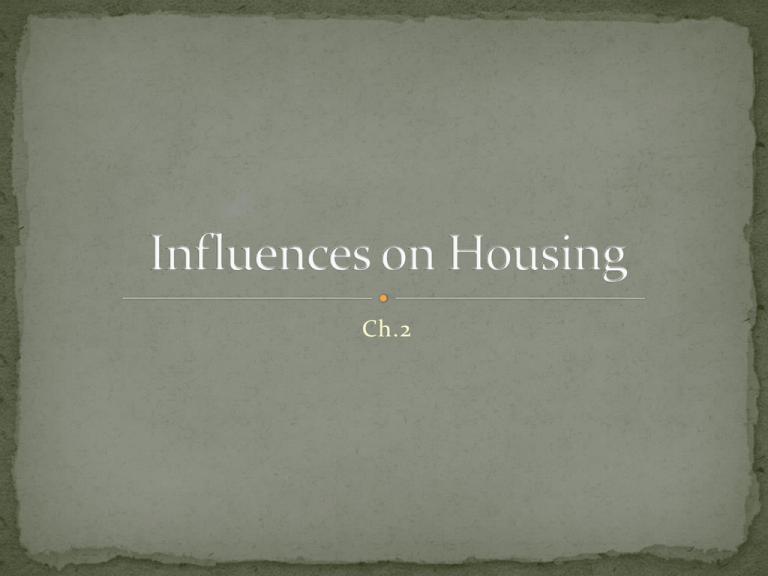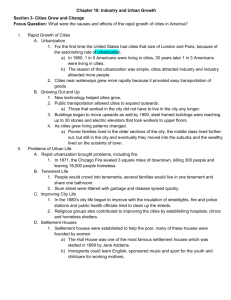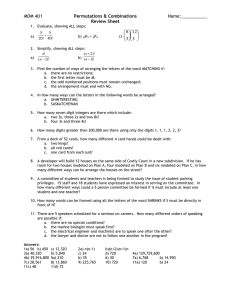Influences on Housing Ch.2
advertisement

Ch.2 The story of housing in the United States begins before the colonies were established by the first European settlers. There is a sharp contrast between the houses of today and those of early North America. Early humans lived in caves. They provided the very basic need of shelter, a place to sleep and rest. Another form is the dugout, a large hole dug in the earth. First known as cliff dwellers. Overhangs were enclosed to give them warmth, privacy, and security. Some Native Americans lived in huts that were constructed of poles and coverings of thatch, hides, or mud placed over poles. Some lived in tepees and wigwams. Some lived in permanent dwellings constructed of adobe. Cliffdwellers Adobe Tepees Hut First shelters used by European settlers were copied after native American dwellings. Houses were built in a short amount of time due to house raisings. They attempted to copy the houses in their homeland. The styles had to be adapted to the materials available. The thatched roof houses in England were not suitable to the cold New England climate. The abundance of trees made the log cabin convenient to build. Log cabin Thatched roof house People moved west and settled on large plots of land. Farmhouses and plantation houses were built. Late 1700’s majority of settlers were agrarian, people who earned their living from the land. By 1890, the rural population had decreased as a result of the industrial revolution. People began to move to cities along with immigrants looking for jobs. The birth rate increased and cities grew. Houses were being built together and crowded. First tenement houses, built mainly for immigrants, appeared in New York about 1840. They were constructed without any regulations. A typical tenement house was 5 stories and consisted of 116 two-room apartments. Outdoor toilets were located on the land in between the buildings. Conditions were very poor and landlords were known as slumlords. In 1890 the Government required each room in a tenement house have a window. Each apartment was to have running water and a kitchen sink. Bathrooms were put in the stairway area connecting the floors. First row houses were built in 1820’s. Row houses: continuous group of dwellings connected by common sidewalls. Many were built to house factory workers. Wood and coal burning stoves Oil and gas lamps Ice boxes Indoor plumbing Machinery Row Houses Tenement Housing Plantation Houses Number of immigrants was increasing. During World War I, almost no housing was built excpet for by the federal government. This caused a housing shortage. Housing was overcrowded and there was a shortage of materials causing houses to fall apart. After World War I 1/3 of the population was living in substandard housing. Great Depression 1929, more than half the population lived in cities. The government soon saw the need for housing reform. The first census, an official count of the population, was taken in 1940. The census determined the housing needs of people were not being met. Factory produced houses began to emerge. Modular, manufactured/mobile, pre-cut, and kit houses Following WWII housing construction resumed. Tract houses, groups of similarly designed houses appeared.





